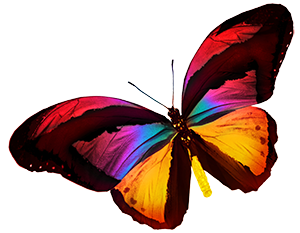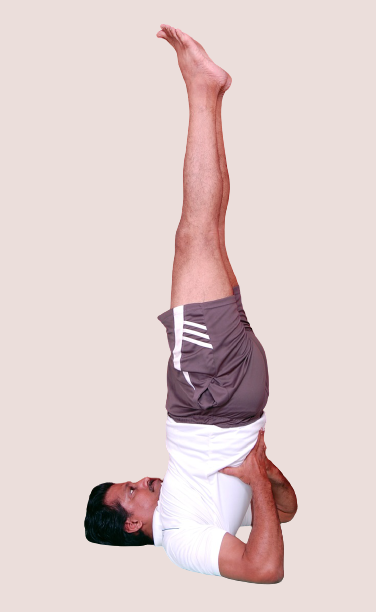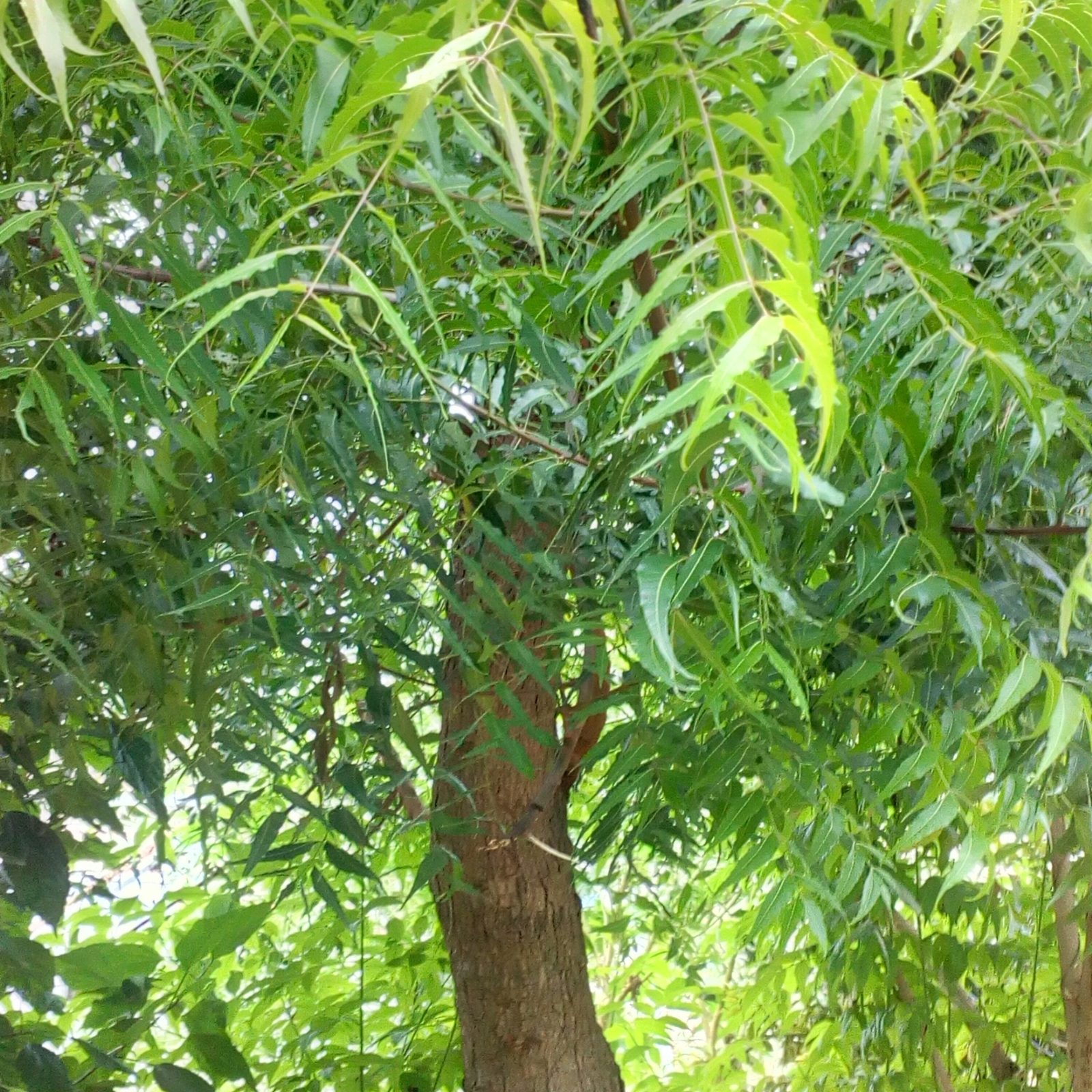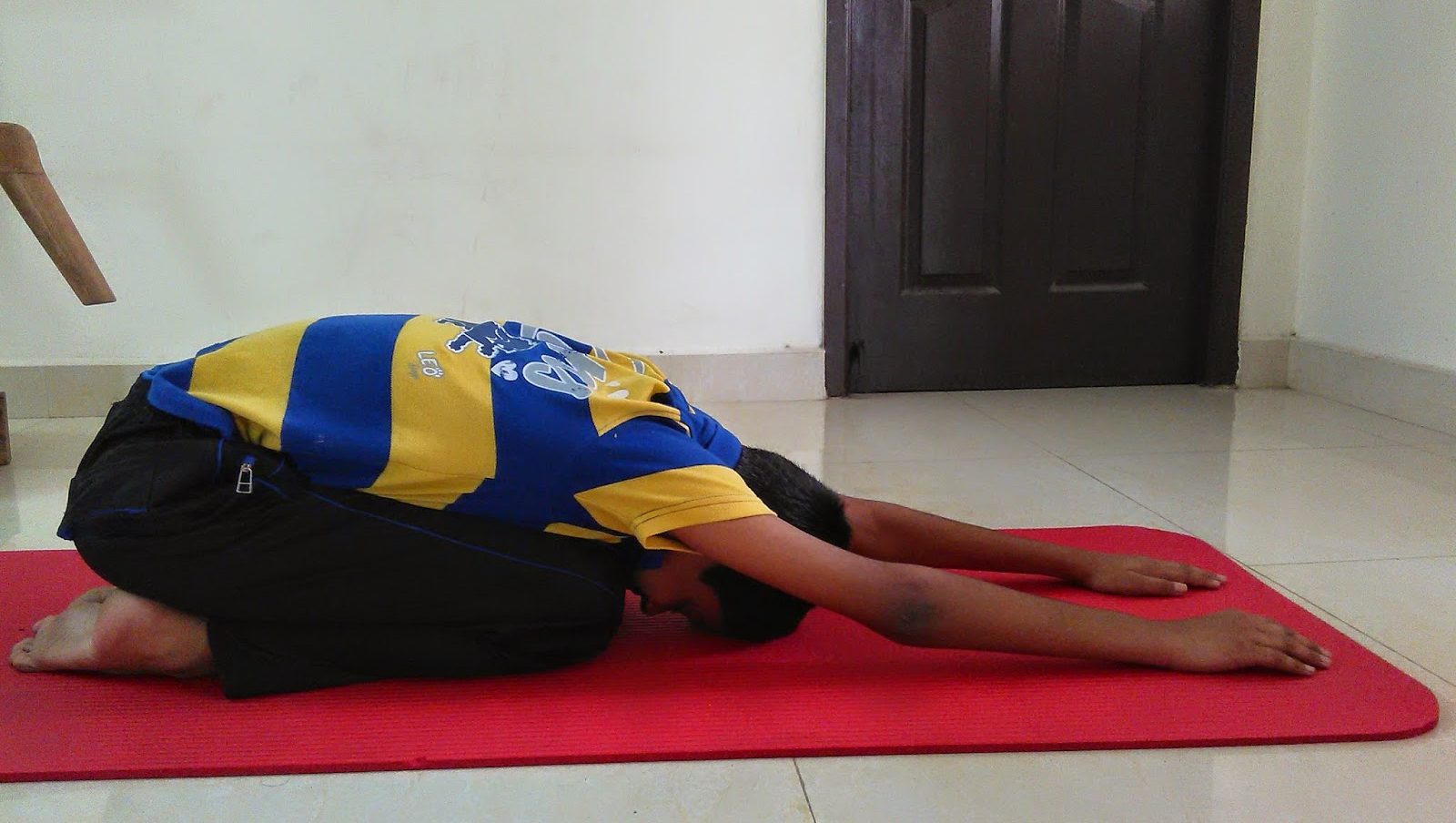Shoulder Stand is called Sarvangasana in Sanskrit. 'Sarva' means 'all' and 'anga' means 'body parts'. This pose involves holding the weight of the body in shoulders and head. Shoulder Stand is called the Queen of all Yoga Poses.
Shoulder Stand stimulates manipura, visudhi, ajna, guru and sahasrara chakras. Hence, the pose attracts universal energy, promotes communication skills and self-expression; promotes healthy thoughts that calm the mind; develops intuition, promotes clarity in determining one's goals in life; elevates the state of mind to higher conscious levels and helps to connect with universal energy.
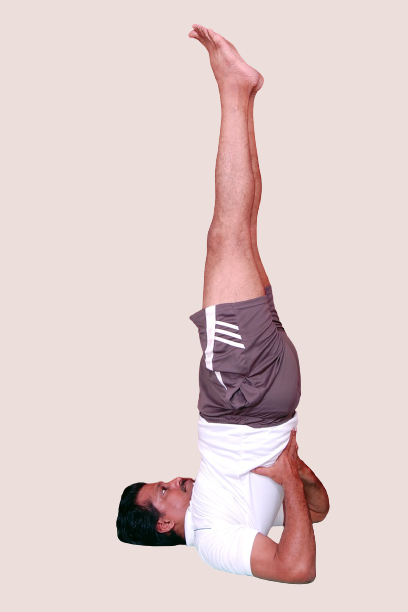
Other Benefits of Shoulder Stand
- It boosts immunity.
- Promotes healthy functions of all glands
- Boosts thyroid function and cures thyroid disorders
- Stimulates functions of parathyroid and helps to maintain healthy calcium levels
- Strengthens the spine and back muscles
- Strengthens the shoulders and neck
- Improves lung health and relieves respiratory conditions
- Boosts heart health.
- Improves brain health
- Helps to reduce excess weight and maintain healthy weight
- Regular practice of the pose helps to strengthen the nervous system.
- Improves digestive function
- It is an effective yoga pose for constipation.
- Supports healthy functions of reproductive organs; cures infertility
- Improves eyesight
- Prevents hair loss and supports hair growth
- Practicing the pose helps to relieve headache.
- Helps to regulate blood sugar levels
- Aids in detoxification
- Supports skin health
- Cures varicose veins
- It is an effective yoga pose for insomnia
- Practicing the pose helps to relieve stress.
- Promotes calm
Step-by-Step Guide
- Lie down on your back with the legs stretched and hands by your sides.
- Exhale as you raise your legs towards the ceiling at 90 degree angle. The legs should be aligned to your hips.
- Lower the legs towards your face; place your palms behind your buttock and raise your buttocks and back off the floor supported by the palms.
- Lock the chin and chest. The body should be in one straight line.
- Fix your gaze on your big toes.
- Hold the pose for 20 to 30 seconds initially. With practice you can increase the duration from 5 to 10 minutes.
Note
Those who are inexperienced should perform the pose only under able guidance. In case of difficulty in raising the body, you can place your legs on the wall for support.
Those with high blood pressure, heart conditions, hernia, kidney disorders, glaucoma, severe neck and spine conditions should refrain from practicing Shoulder Stand. Avoid performing the pose during menstrual cycle.

Yoga Pose for Day 91 - Plough Pose (Halasana)
In one of our earlier posts, we have covered the benefits and how-to-do of Half Plough Pose. Today's pose is a full version of Half Plough Pose, that is, Plough Pose. It is called as Halasana in Sanskrit. 'Hala' means 'plough'.
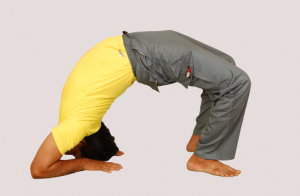
Yoga Pose for Day 89 - Bridge Pose on Elbows (Dhva Pada Dhanurasana)
Yesterday's post was about Four-Footed Pose, a variation of Bridge Pose. Bridge Pose on Elbows, which we are going to work on today is also a variation of Bridge Pose. The pose is called Dhva Pada Dhanurasana in Sanskrit. 'Dhva' means 'both', 'pada' means 'leg' and 'foot' and 'dhanur' means 'bow'.

Yoga Pose for Day 88 - Four-Footed Pose (Chatush Padasana)
Four-Footed Pose is a variation of Bridge Pose. The pose is called Chatush Padasana in Sanskrit. The term 'chatush' means 'four' and 'pada' means 'foot' and 'leg'.
